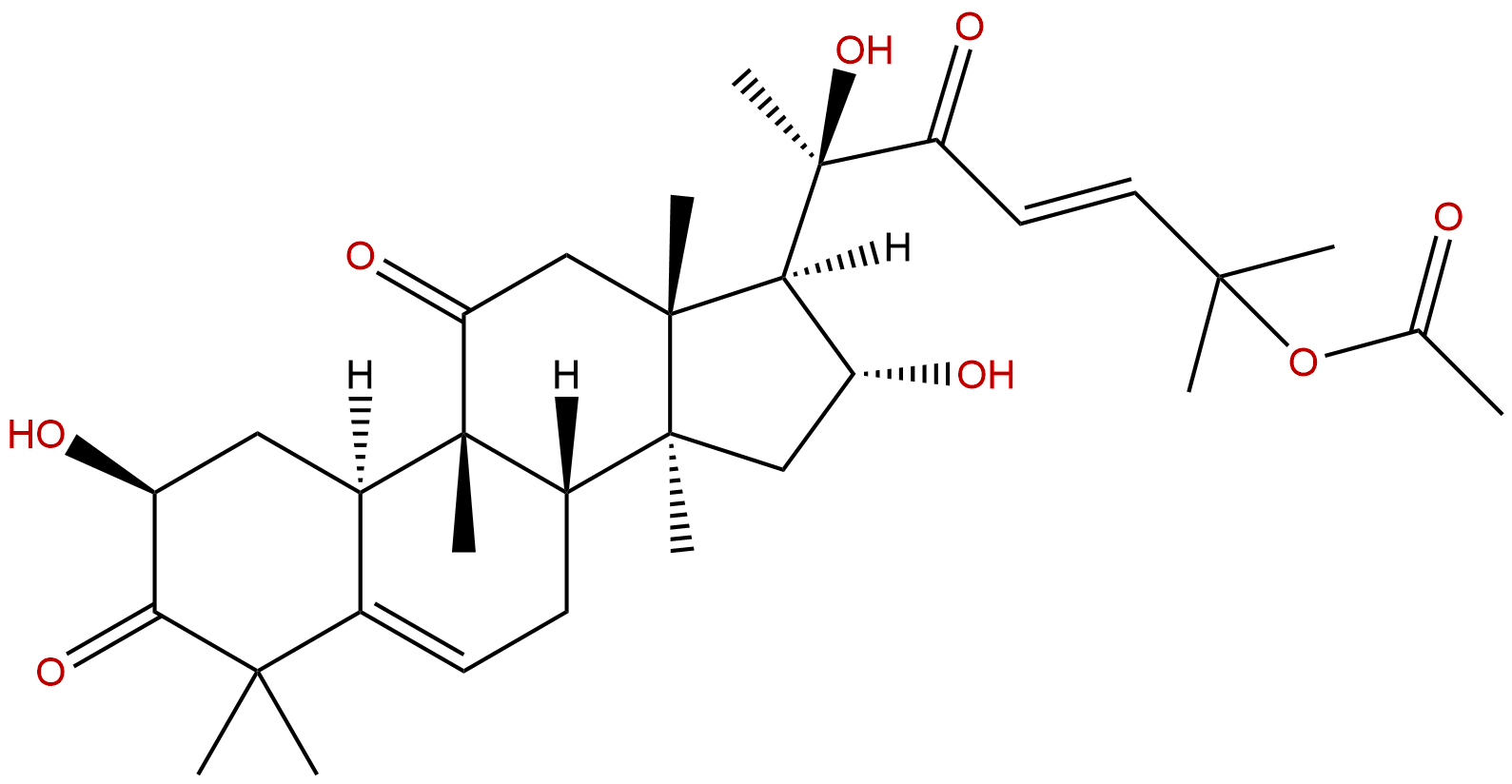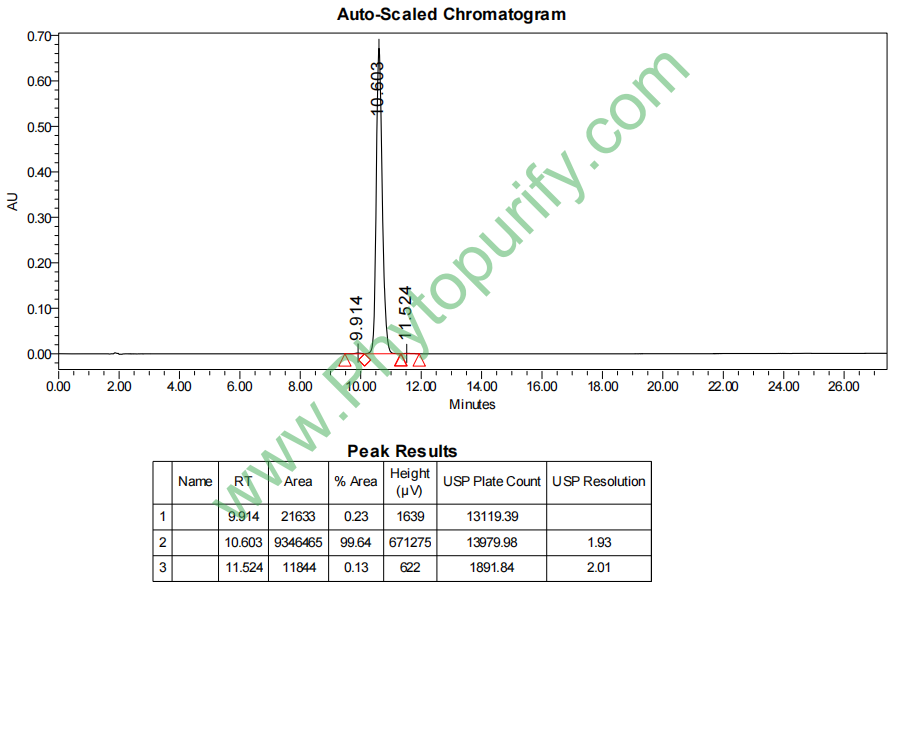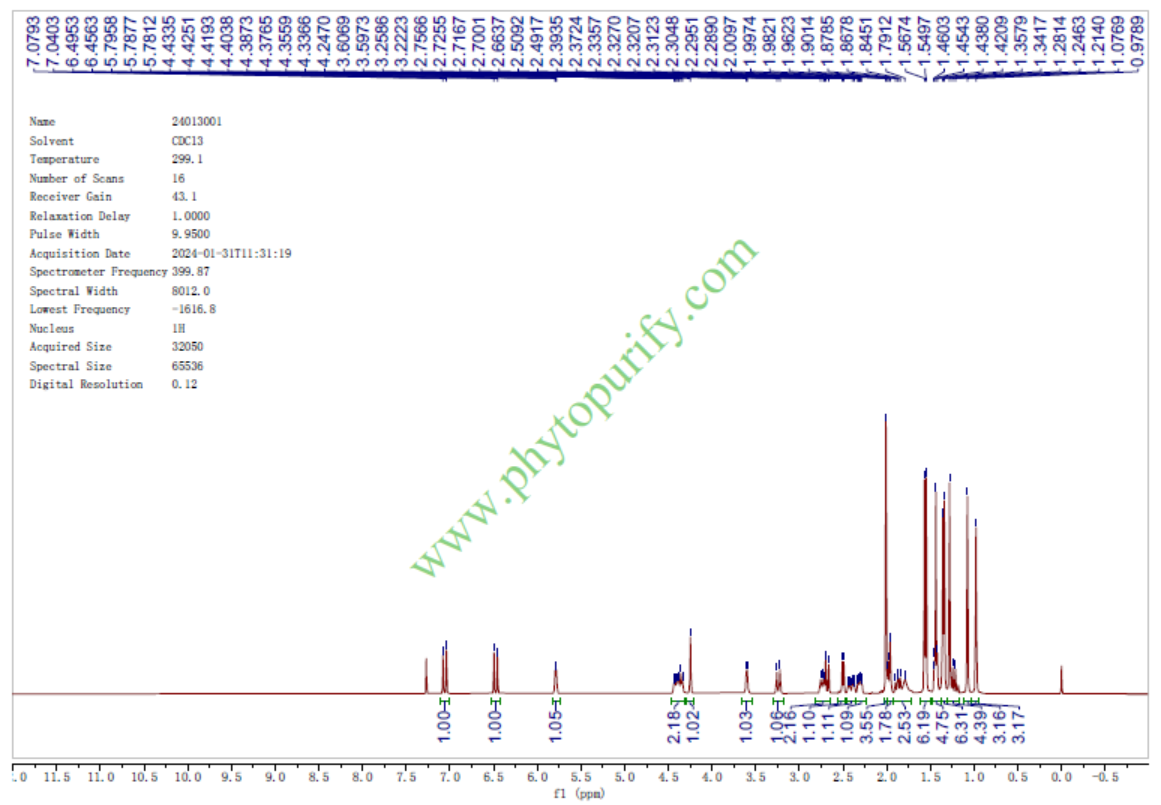
Cucurbitacin BCAS No.:6199-67-3
|
||||||||||
 |
|
|
||||||||

| Catalogue No.: | BP0414 |
| Formula: | C32H46O8 |
| Mol Weight: | 558.712 |
Product name: Cucurbitacin B
Synonym name: Amarin
Catalogue No.: BP0414
Cas No.: 6199-67-3
Formula: C32H46O8
Mol Weight: 558.712
Botanical Source: Bitter principle of fruits of Cucurbitaceae, also present in some other plants, e.g. Anagallis arvensis, Luffa acutangula, Luffa graveolens, Luffa echinata, Echinocystis fabacea, Iberis spp., Begonia tuberhybris-alba, Begonia heracleifolia, Bryonia alba,
Physical Description: White powder
Type of Compound: Triterpenoids
Purity: 95%~99%
Analysis Method: HPLC-DAD or/and HPLC-ELSD
Identification Method: Mass, NMR
Packing: Brown vial or HDPE plastic bottle
Storage: Store in a well closed container, protected from air and light. Put into refrigerate or freeze for long term storage.
Whenever possible, you should prepare and use solutions on the same day. However, if you need to make up stock solutions in advance, we recommend that you store the solution as aliquots in tightly sealed vials at -20℃. Generally, these will be useable for up to two weeks.
The product could be supplied from milligrams to grams, up to kilograms
Inquire for bulk scale.
Descriptions:
Cucurbitacin B (cucB) is a triterpenoid constituent of Cucurbitaceae vegetables and a promising phytochemical for cancer prevention, cucB induces G(2) arrest and apoptosis through a STAT3-independent but ROS-dependent mechanism in SW480 cells.[1]
Cucurbitacin B has antiproliferative effect, can induce apoptosis by inhibition of the JAK/STAT pathway and potentiates antiproliferative effects of gemcitabine on pancreatic cancer cells, may be an effective, new approach for the treatment of ER-, Her2/neu amplified, and p53 mutant breast cancers.[2,3]
Combination of cucurbitacin B at a relatively low concentration with either of the chemotherapeutic agents, docetaxel (DOC) or gemcitabine (GEM) , shows prominent antiproliferative activity against breast cancer cells without increased toxicity, this promising combination should be examined in therapeutic trials of breast cancer.[4]
Cucurbitacin B has anti-cutaneous squamous cell carcinoma (CSCC) activity by inhibiting growth, arresting the cell cycle, and synergistically potentiate the anti-proliferative effect of cisplatin in CSCC.[5]
Cucurbitacin B a selective inhibitor of JAK2/STAT3 signaling, could promote dendritic cells (DCs) differentiation and improve antitumor immunity, also significantly reduce the frequency of imCs in patients with lung cancers and enhance the effect of p53-specific CTL on tumor 16HBE/BPDE cells.[6]
References:
[1] Yasuda S, Yogosawa S, Izutani Y, et al. Mol Nutr Food Res, 2010, 54(4):559–65.
[2] Thoennissen N H, Iwanski G B, Doan N B, et al. Cancer Res, 2009, 69(14):5876-84.
[3] Wakimoto N, Dong Y, O’Kelly J, et al. Cancer Sci, 2008, 99(9):1793–7.
[4] Aribi A, Sigal Gery ?, Lee D H, et al. Int J Cancer, 2013, 132(12):2730–7.
[5] Chen W, Leiter A, Yin D, et al. Int J Oncolo, 2010, 37(3):737-43.
[6] Lu P, Yu B, Xu J. Cancer Biother Radio, 2012, 27(27):495-503.
[7] Sun W, Chao Z M, Wang C, et al. Chinese Journal of Experimental Traditional Medical Formulae ,2014, 20(23):86-8.
HPLC of Cucurbitacin B

HNMR of Cucurbitacin B
